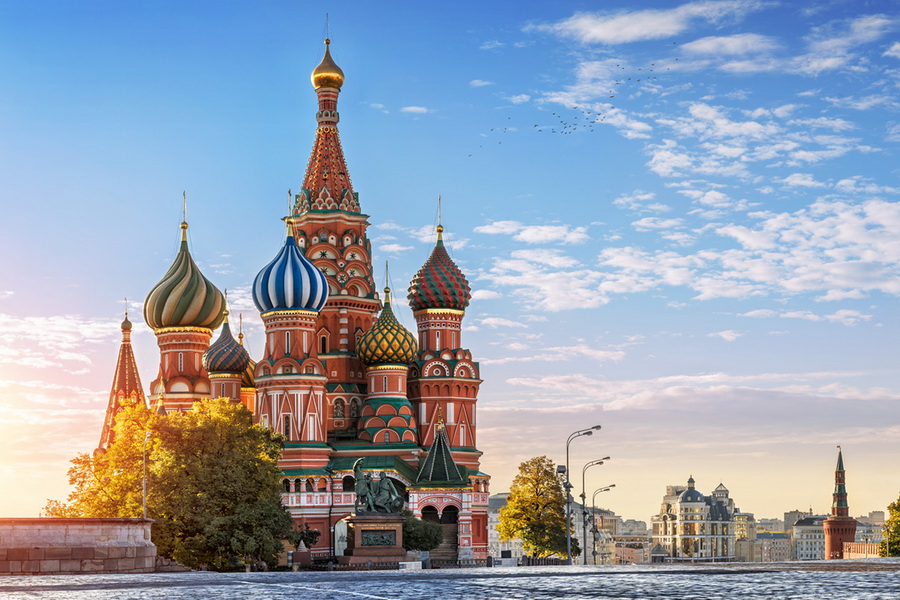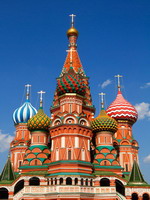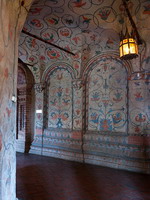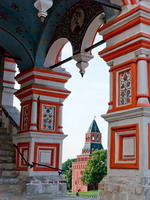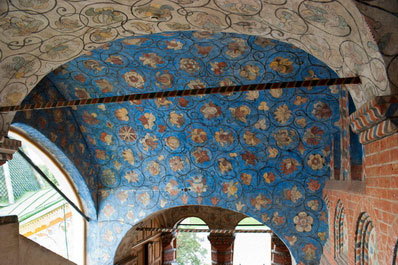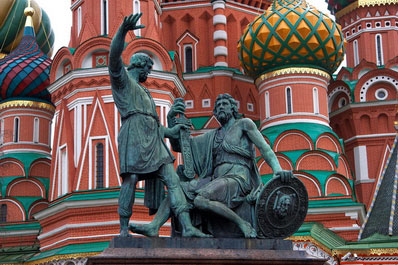храм христа спасителя на англ
A short history of Christ the Saviour Cathedral in Moscow
Christ the Saviour Cathedral ( Храм Христа Спасителя ) is the mother cathedra or see of the Russian Orthodox Patriarchate, whose current primate is His Holiness Patriarch Kirill of Moscow and all Russia. The cathedral is located on the north bank of the Moskva River to the immediate southwest of the capital’s Kremlin fortress, where, inside the Dormition Cathedral (Uspenskiy Sobor) all Russian tsars and tsarinas have been crowned and anointed. Christ the Saviour is the tallest Orthodox cathedral in the world, standing at 103 metres (338 feet) above the pavement. The main sanctuary (temple) can fit over 10,000 standing worshipers.
On Christmas Day in 1812, Russian Imperial forces drove the last of Napoleon Bonaparte’s Grand Army off of Russian territory — once 600,000 men strong, now a mere 20-30,000 remained. In thanksgiving, His Imperial Majesty Emperor Alexander I (1777-1825, r. 1801-1825) signed a Manifesto ordering the construction of a magnificent Cathedral in honor of Christ the Savior in Moscow as a thanksgiving to God and to honor the victorious Russian army.
The Emperor’s Manifesto reads, in part:
To signify Our gratitude to Divine Providence for saving Russia from the doom that overshadowed Her and to preserve the memory of the unheard of efforts, loyalty and love for our Faith and Homeland displayed during these difficult days by the Russian people, We hereby intend to build a Cathedral in honor of Christ the Saviour in our capital city of Moscow, wherein the appropriate Decree will be issued in due time. May the Almighty bless Our intentions. May our intentions be fulfilled. May the Cathedral stand for many centuries. Let the incense of thanksgiving, together with love and a desire to imitate the feats of our anscestoral feats, burn before the holy altar of God for many generations.
After over 40 years of initial construction paid for by donations from across the Russian Empire and with imperial patronage, the cathedral was first consecrated on 26 May 1883 in the presence of Emperor Alexander III and senior members of the Imperial Family along with numerous Church and foreign dignitaries. Demolished on Soviet dictator Stalin’s orders on 5 December 1931, the site was initially envisioned to hold a colossal monument to Marxist-Leninism, a gaudy skyscraper called the “Palace of Soviets” raised to the memory of Lenin. Here is a brief video showing the cathedral’s destruction.
Plans for the “palace” stalled during the Great Patriotic War (WWII), and afterwards the foundations were turned into the world’s largest open-air swimming pool, in which numerous Soviet citizens drowned. Following the collapse of the Soviet Union in 1991, the newly-free Moscow Patriarchate announced plans to rebuild the demolished Cathedral on its pre-revolutionary model and scale. Funds poured in from all across the former Russian Empire, including from Russian emigres living in Western Europe and the Americas. Construction was finished by 2000, and HH Patriarch Alexey II consecrated the new cathedral along with numerous other Russian clergy on 19 August 2000. Besides functioning as the Patriarch’s cathedral church, the building is a monument to the suffering of the Russian people under communism and a symbol of the resurgence of Orthodoxy in Russian cultural life following 1991. Every year, the President and Prime Minister of the Russian Federation attend Nativity (7 January on the civil calendar/25 December on the Julian) and Paschal midnight services in the cathedral, and are greeted with an address by the Patriarch, who they in turn address with the traditional festive greeting “Christ is Risen!”, “Truly He is Risen!” (Христос Воскресе! Ваистину Воскресе!).
Nigel Fowler Sutton notes
Cathedral of Christ the Saviour – Xрам Христа Спасителя
Cathedral of Christ the Saviour – Xрам Христа Спасителя
As this is my first real post on the blog, I decided to talk about the first cultural site that really thrilled me: the Cathedral of Christ the Saviour. Actually, the very first thing which had arouse in me enthusiasm was the Red Square but everybody knows or has, at least, heard something about it. While, the Cathedral of Christ the Saviour is quite less famous in the world.
It is situated on the northern bank of the Moskva river and the nearest metro station is Kropotkinskaya. But thanks to its very central position you can also reach it on foot, because it’s just few minutes walk from the Kremlin. Furthermore, you cannot get lost because it is the tallest Orthodox Christian church in the world (103 metres) and you will be guided by its gold onions: cupolas typical for Russian architecture.
But the cathedral is not so old as you can imagine. Indeed, it is the result of a brand new project, realized in the Nineties. I’ll briefly tell you its troubled history. The original project is due to the Tzar Aleksandr I, who decided to commission it after the defeat of Napoleon in the 19th century, in honour of Christ the Saviour: “to signify Our gratitude to Divine Providence for saving Russia from the doom that overshadowed Her”. But the brother of Aleksandr I, Nikolaj I, when succeeded to him, changed completely the project with a new design, taking as inspiration the Hagia Sophia Church in Istanbul.
The cathedral was consecrated in 1883 but it didn’t survive for long time. Indeed, in 1931, Stalin decided to demolish it in order to build the Palace of the Soviets (never created). Under the government of Nikita Khrushchev it was transformed into a huge public swimming pool. Only in February 1990, the Russian Orthodox Church received the permission from the Soviet Government to rebuild the Cathedral and the reconstruction finished in 2000.
If from the outside it seems magnificent and sumptuous, the inside is really breathtaking. The predominant colours are gold and red and all the walls and domes are painted with frescas and religious images. There are always many people praying inside and this is a great way also to understand the Russian culture.
I really suggest everybody who is in Moscow or wants to visit this city, to go to have a look to this magnificent.
You will not regret!
This blog was brought to you by Elena, an intern and a student at Liden and Denz
храм христа спасителя
1 Храм Христа Спасителя
2 храм Христа Спасителя
3 Храм Христа Спасителя
4 храм
См. также в других словарях:
храм христа спасителя — спас на гаражах Словарь русских синонимов. храм христа спасителя сущ., кол во синонимов: 1 • спас на гаражах (1) Словарь синонимов ASIS … Словарь синонимов
Храм Христа Спасителя — У этого термина существуют и другие значения, см. Храм Христа Спасителя (значения). Кафедральный православный собор Кафедральный Соборный храм Христа Спасителя (собор Рождества Христова) … Википедия
Храм Христа спасителя — Кафедральный Православный храм Кафедральный Соборный храм Христа Спасителя (во имя Рождества Христова) Храм Христа Спасителя Вид Храма Христа Спасителя … Википедия
Храм Христа Спасителя — кафедральный собор г. Москвы (архитектор К.А. Тон, 1794–1881). 25 дек. 1812 имп. Александр I издал манифест «о построении в Москве церкви во имя Христа Спасителя в ознаменование благодарности к Промыслу Божию за спасение России от врагов»… … Религии народов современной России
Храм Христа Спасителя — построен в Москве по обету имп Александра Благословенного, пожелавшего воздать этим благодарность Богу Промыслителю, спасшему Россию от нашествия французских полчищ в 1812 г. и увековечить в памяти потомства эту достопамятную тяжкую годину … Полный православный богословский энциклопедический словарь
Храм Христа Спасителя — в Москве. Был построен на месте Алексеевского монастыря у Пречистенских ворот (1832 1889), автор проекта и руководитель работ русский архитектор К. А.Тон. Построен в память о войне 1812 года. В архитектуре собора были сделаны попытки возродить… … Строительный словарь
Храм Христа Спасителя — в Москве. Был построен на месте Алексеевского монастыря у Пречистенских ворот (1832 1889), автор проекта и руководитель работ русский архитектор К. А.Тон. Построен в память о войне 1812 года. В архитектуре собора были сделаны попытки возродить … Архитектурный словарь
храм Христа Спасителя — хр ам Христ а Спас ителя … Русский орфографический словарь
храм Христа Спасителя — … Орфографический словарь русского языка
Tourist attractions in Moscow – Достопримечательности Москвы
Дорогой ученик! В этом материале подготовлено описание достопримечательностей Москвы. Под английским текстом есть перевод на русский язык.
Red Square
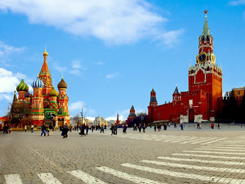
Red Square is one of the most famous Russia’s places of interest. It is located right in the heart of Moscow.
Many significant buildings surround Red Square. There is the Kremlin, Lenin’s Mausoleum, Saint Basil’s Cathedral, GUM trading house and Kazan Cathedral there. The State Historical Museum is also located in the square.
Red Square is the place where a lot of festivals are celebrated.
The Kremlin
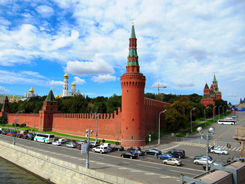
The Kremlin is a fortified complex in the centre of Moscow. It is the main political and historical place of the city.
Today the Kremlin is the official residence of the President of Russia.
Saint Basil’s Cathedral

In the XX century the church was open for public as a museum. It is one of the most recognizable tourist attractions. Saint Basil’s Cathedral is included in the list of UNESCO World Heritage Sites.
The Bolshoi Theatre
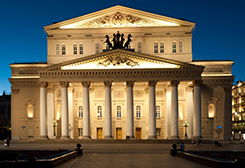
The Bolshoi Theatre is one of the most renowned theatres in the world. It is located in the heart of Moscow in Theatre Square. The performances of ballet and opera are held there.
The Bolshoi Theatre was founded in 1776. Since then more than 800 productions have been staged there.
A lot of artists who work in the Bolshoi Theatre are awarded honorary titles. From 2005 to 2011 the theatre was closed for reconstruction.
The State Tretyakov Gallery
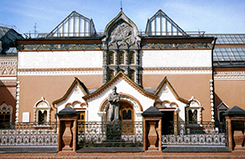
The State Tretyakov Gallery is one of the largest depositaries of Russian fine art in the world. It was founded in 1856 by Pavel Tretyakov, a Moscow merchant.
At first the gallery was located in a mansion owned by the Tretyakov family but with the growth of the collection new extensions were added to the mansion.
During the Great Patriotic War the collection was conveyed to Novosibirsk and in May 1945 returned to Moscow.
The Cathedral of Christ the Saviour
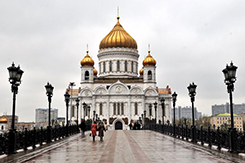
The Cathedral of Christ the Saviour was built in the XIX century. The cathedral is a memorial to those who died during the invasion of Napoleon Bonaparte.
Ostankino Tower
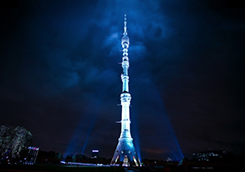
Ostankino Tower is open for tourists. There is the Seventh Heaven restaurant and two observation platforms. One of the platforms is outdoor and the other one is indoor. There is also a concert hall in Ostankino Tower where different events are held.
The Moscow Metro
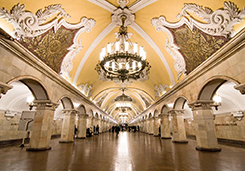
The first line of the Moscow Metro was opened in 1935. Today the Moscow Metro is the 5th busiest metro in the world.
A lot of underground stations are landmarks.
The Moscow Metro consists of 13 lines with 203 stations (2017). Nearly all of them are underground. During rush hours the minimum interval between trains is 90 seconds.
Moscow City
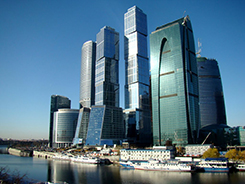
Moscow City is a business district in the centre of Moscow. The area is still under construction.
In Moscow City there are office buildings, shopping malls, leisure centres, exhibition centre, restaurants, elite apartments and flats and even Matrimonial Centre.
Sparrow Hills
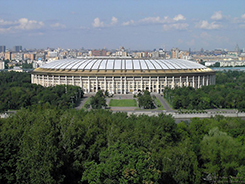
Sparrow Hills is one of the most significant Moscow’s landmarks. It reaches the height of 80 metres above the Moskva river.
Sparrow Hills is one of the most scenic places in Moscow. The observation platform on the hill is a place worth visiting. It gives the best panoramic view of the city which both residents of the city and tourists can admire.
In 1987 this landmark was declared a natural sanctuary.
Знаменитые достопримечательности Москвы
Красная Площадь

Красная площадь – одна из самых известных достопримечательностей России. Она находится в самом центре Москвы.
Многочисленные значимые здания окружают Красную площадь. На ней расположен Кремль, мавзолей Ленина, храм Василия Блаженного, ГУМ и Казанский собор. Государственный исторический музей также находится на площади.
На Красной площади проводятся многочисленные празднования.
Кремль

Кремль – это крепость в центре Москвы. Это главное политическое и историческое место города.
Сегодня Кремль является официальной резиденцией президента России.
Собор Василия Блаженного

В XX веке собор был открыт в качестве музея. Это одна из самых узнаваемых достопримечательностей. Храм Василия Блаженного включен в список Всемирного наследия ЮНЕСКО.
Большой театр

Большой театр – один из самых известных театров мира. Он расположен в самом центре Москвы на Театральной площади. В нем ставят балет и оперу.
Большой театр был основан в 1776 году. С тех пор на его сцене было поставлено более 800 произведений.
Многие артисты, работающие в Большом театре, удостоены почетных званий. С 2005 по 2011 год театр был закрыт на реконструкцию.
Государственная Третьяковская галерея

Государственная Третьяковская галерея содержит одну из самых крупных коллекций русского изобразительного искусства в мире. Она была основана в 1856 году Павлом Третьяковым, московским купцом.
Сначала галерея располагалась в особняке, принадлежащем семье Третьяковых, но по мере роста коллекции к нему пристраивались другие помещения.
Во время Великой Отечественной войны коллекция была перевезена в Новосибирск и только в мае 1945 года была вновь привезена в Москву.
Храм Христа Спасителя

Храм Христа Спасителя был воздвигнут в XIX веке. Храм является памятником воинам, погибшим во время нашествия Наполеона Бонапарта.
Останкинская телебашня

Башня открыта для туристов. В ней также работает ресторан «Седьмое небо» и есть 2 смотровых площадки. Одна из площадок открытая, а другая – крытая. В Останкинской башне есть концертный зал, где проводятся различные мероприятия.
Московский метрополитен

Первая линия Московского метро открылась в 1935 году. На сегодняшний день Московское метро является 5-м в мире по интенсивности использования.
Многие станции метро являются памятниками архитектуры.
Москва-Сити

Москва-Сити – это деловой район в центре Москвы. Район до сих пор строится.
В Москва-Сити есть офисные здания, торговые и развлекательные центры, выставочный центр, рестораны, элитные апартаменты и квартиры и даже Дворец Бракосочетаний.
Воробьевы горы

Воробьевы горы – одна из самых значимых достопримечательностей Москвы. Они возвышаются на 80 метров над уровнем Москвы-реки.
Воробьевы горы – одно из красивейших мест Москвы. Смотровая площадка на холмах – это место, которое стоит посетить. С нее открывается самая лучшая панорама, которой могут полюбоваться как жители города, так и туристы.
В 1987 году эта достопримечательность была объявлена памятником природы.
St. Basil’s Cathedral, Moscow
One of Russia’s most recognizable architectural masterpieces is Pokrovsky Cathedral, better known as St. Basil’s Cathedral in Moscow. This Orthodox church, which has earned international recognition for its unique beauty, is located in the historical center of Russia’s capital. Its structural distinctiveness evokes endless admiration from guests and justifiable pride in Muscovites, who are honored to call this world masterpiece their own.
The cathedral was built from 1555-1561 by order of Tsar Ivan the Terrible, who vowed that he would build a church if the city of Kazan were captured from the Kazan Khanate. The people initially called the Cathedral Pokrov na Rvu (Moat Cover) as it was built next to a deep moat that ran along the eastern wall of the Moscow Kremlin.
In one of the cathedral’s chapels lies St. Basil the Blessed, the most revered holy fool in Russia from whom the church received its unofficial name. Legend has it that he collected money for the construction of Pokrovsky Cathedral and was known to throw coins over his right shoulder on Red Square in Moscow, which no one, not even the thieves, dared to touch. In August 1552, shortly before his death, St. Basil gave the collected money to Ivan the Terrible, who ordered a temple be built on the site.
Although the church was built by two Russian architects, Postnik and Barma, their identity only became known in 1895, when records were found in a historical manuscript collection of the 17th century. According to legend, Ivan the Terrible, upon seeing the construction of St. Basil’s Cathedral completed according to the architects’ design, was so delighted with its beauty that he ordered the architects be blinded so that they could never again build a temple equal in splendor to Pokrovsky Cathedral.
At St. Basil’s Cathedral, facts and legends have become enmeshed. According to another legend, Napoleon wished to move this architectural miracle to Paris. As the technology of the time was unable to cope with this task, the French emperor instead ordered his army to blow up the church, along with the Kremlin, before retreating. The Muscovites tried in vain to extinguish the lighted wicks, but providence intervened through a sudden torrential downpour, which helped to dowse the fire and save the church from destruction.
St. Basil’s Cathedral is a symmetrical ensemble of eight colorful, pillar-shaped churches surrounding the ninth and highest chapel, which is crowned with a pergola. Each of the eight churches is named after a saint on whose holy day a significant event of Ivan the Terrible’s Kazan campaigns took place. The central church is dedicated to the Feast of the Intercession of the Mother of God, for it was on this day that Kazan was stormed. The multihued churches are crowned with bulbous domes, each of which is unique in its architectural design. Each dome is further decorated with cornices, arched semi-circles, windows and niches.
St. Basil Cathedral’s interior is equally impressive. In the 1920s, it received the status of a museum, and since 1934 has been listed as a branch of the State Historical Museum. The cathedral-museum has nine iconostases, which contain about 400 icons of the 16th-19th centuries and represent the best examples of Novgorod and Moscow iconography. In addition to icons, the cathedral holds portrait and landscape paintings, church utensils, various weapons from the reign of Ivan the Terrible and an interesting collection of bells cast in Russia, Belarus, Holland, France and Germany. Among the most valuable exhibits is a 17th-century chalice (a liturgical vessel for consecrating wine) that belonged to Tsar Alexey Mikhailovich. The colors and detail of the frescoes splayed across the churches’ interior likewise leave many visitors speechless.
St. Basil’s Cathedral in Moscow attracts millions of tourists each year and has been counted among Russia’s UNESCO World Heritage Sites since 1990.


